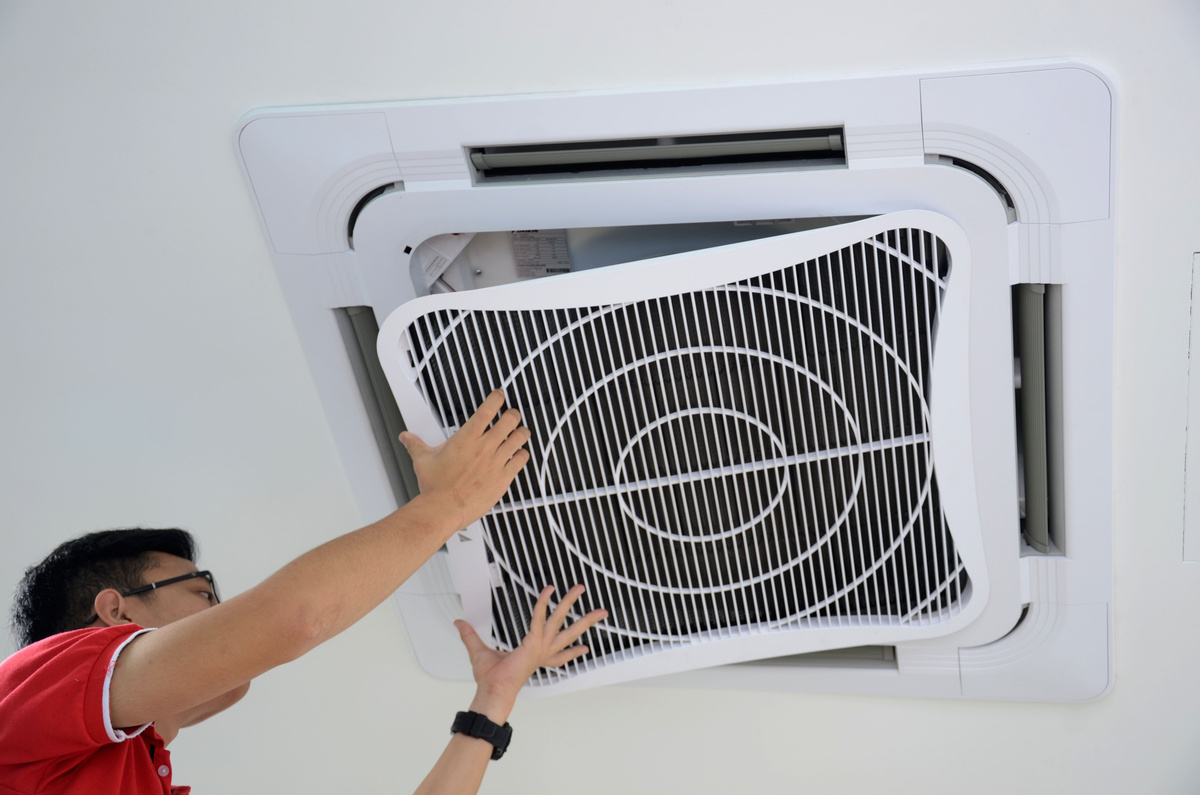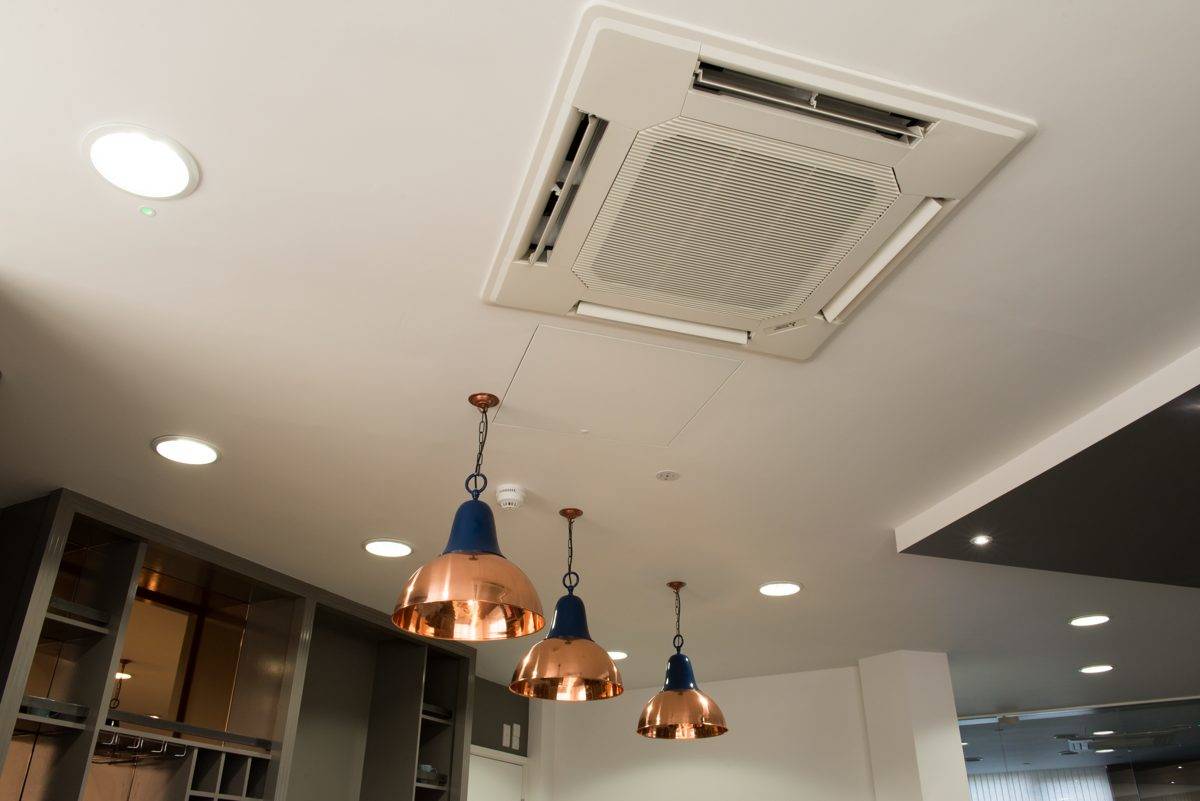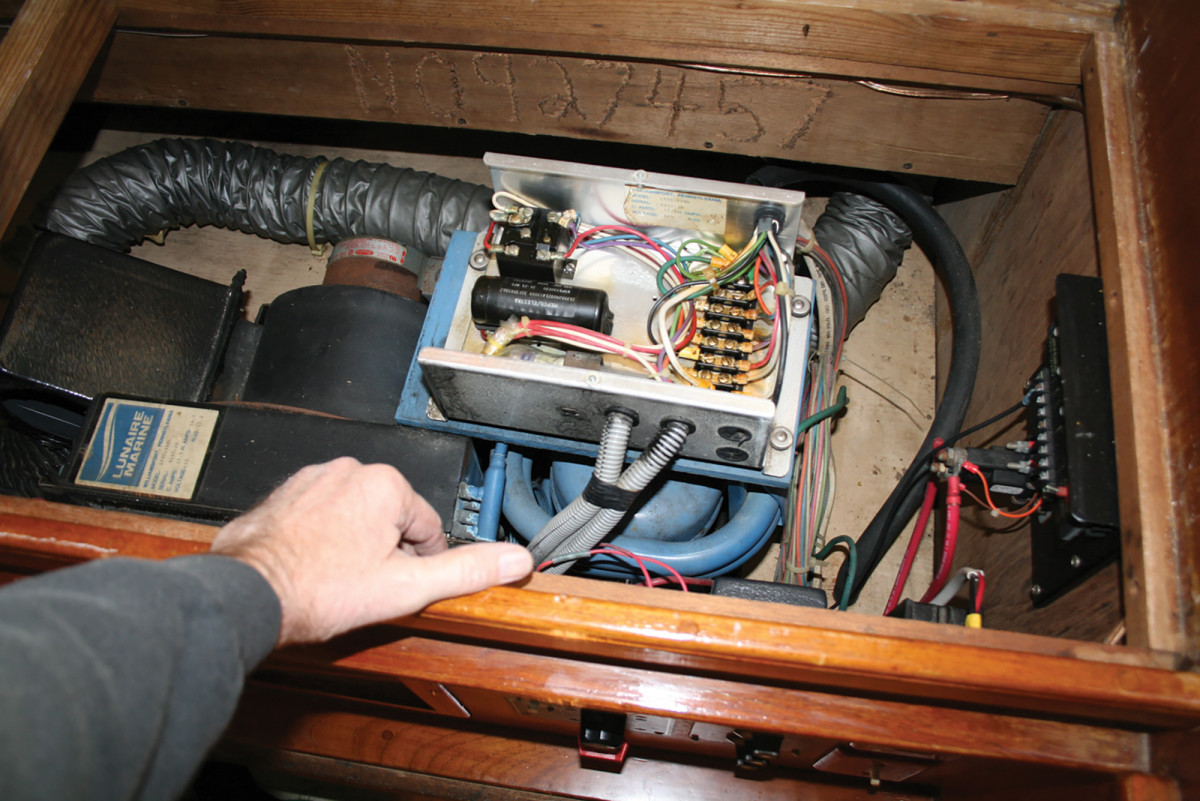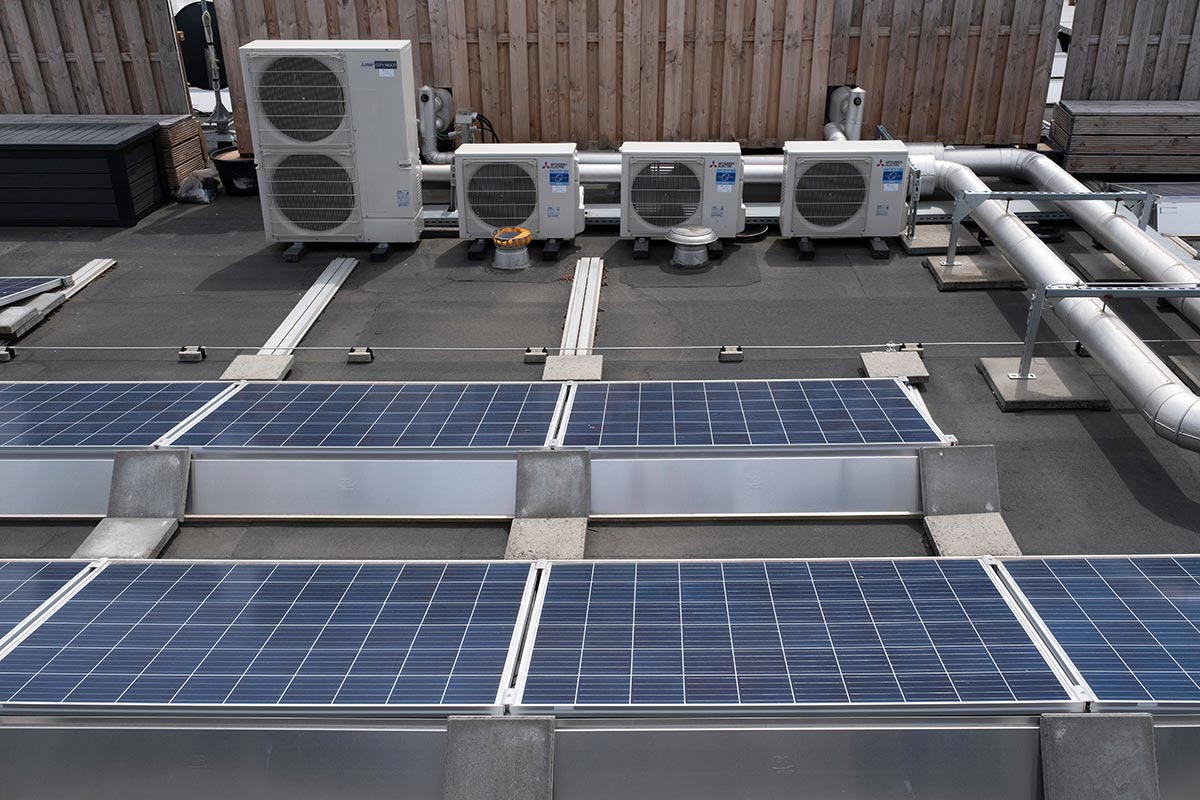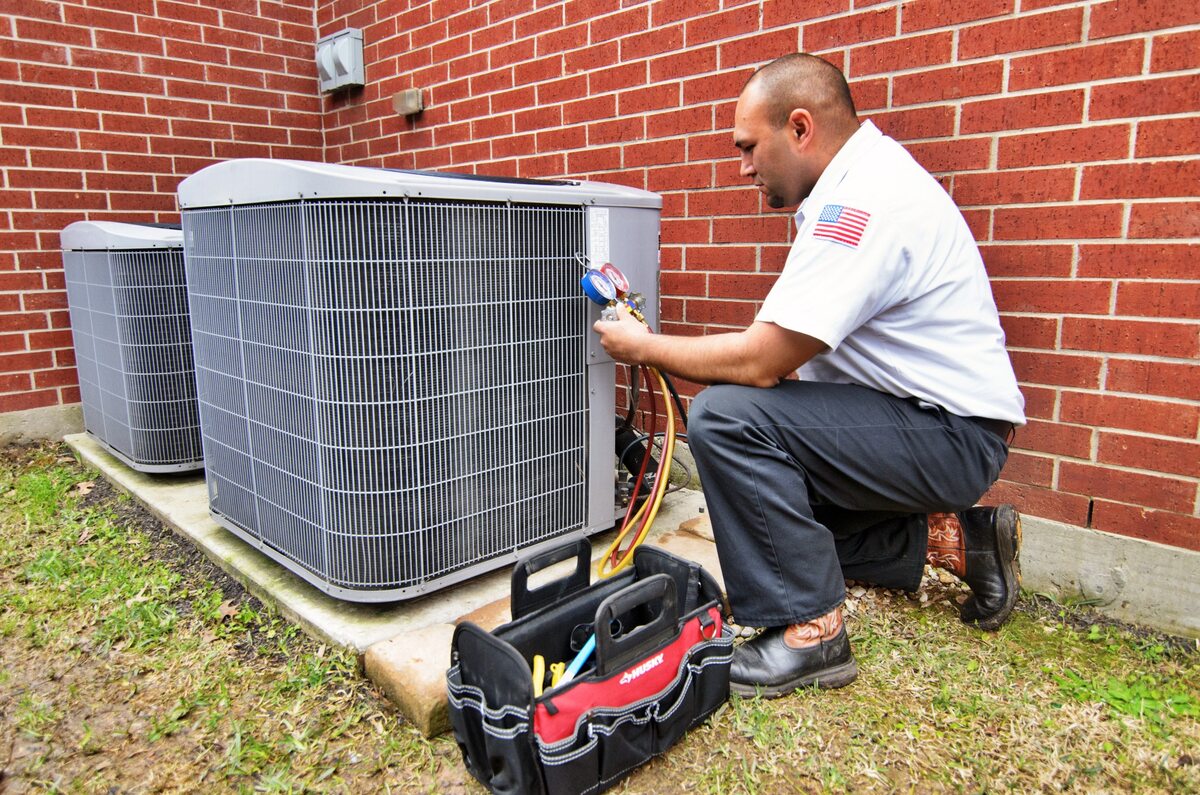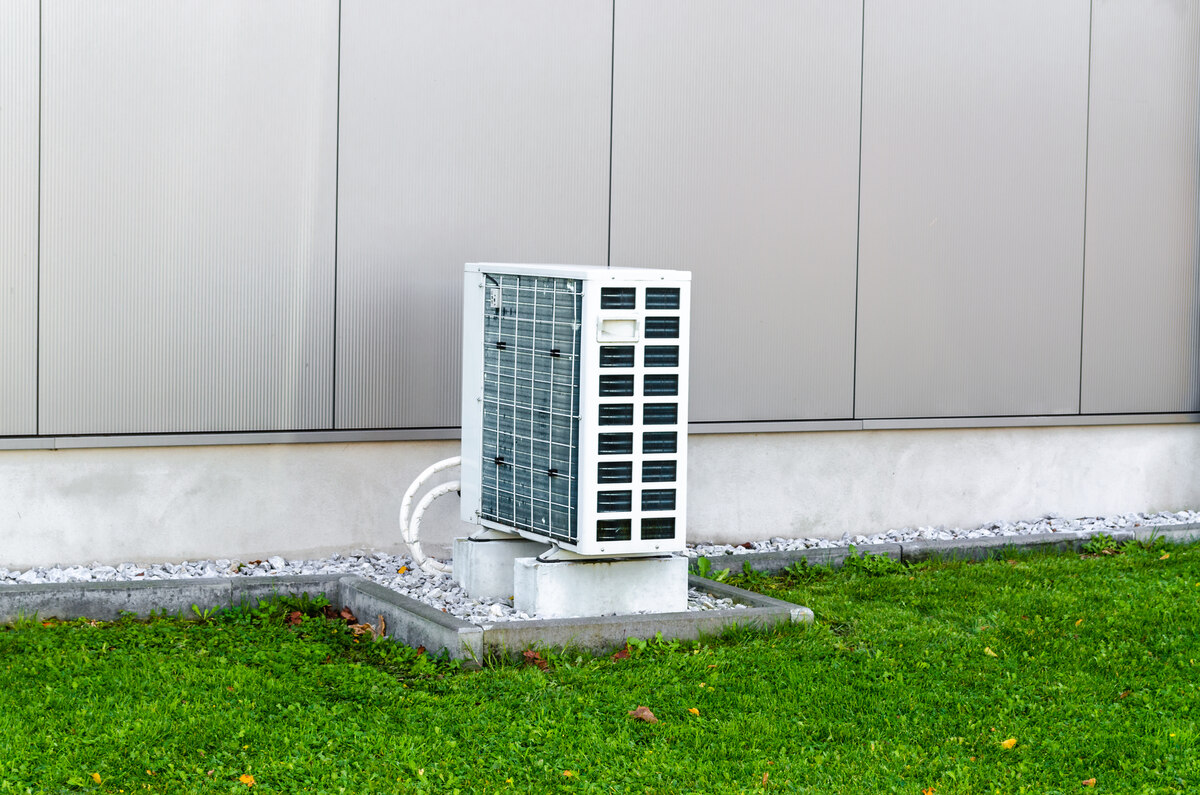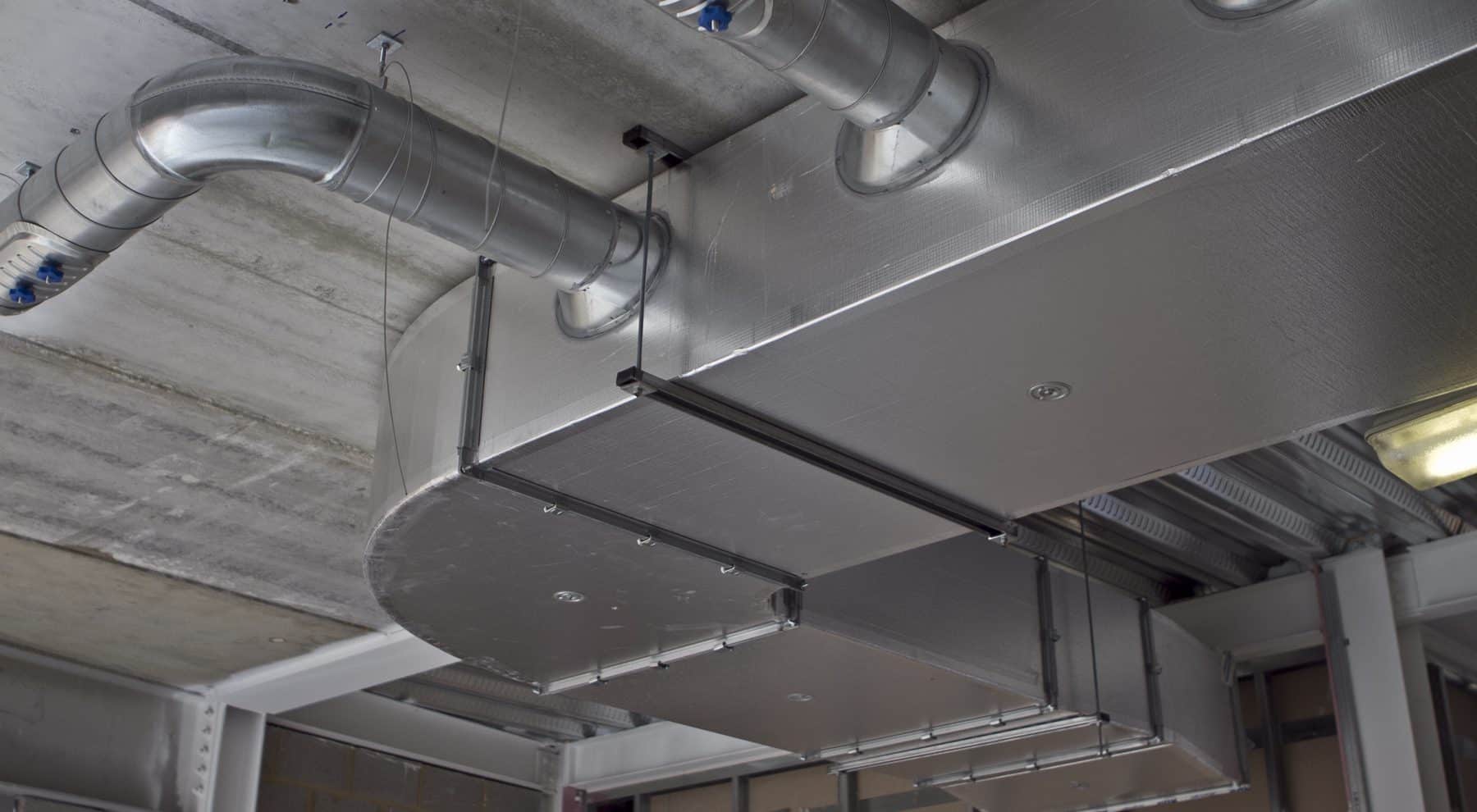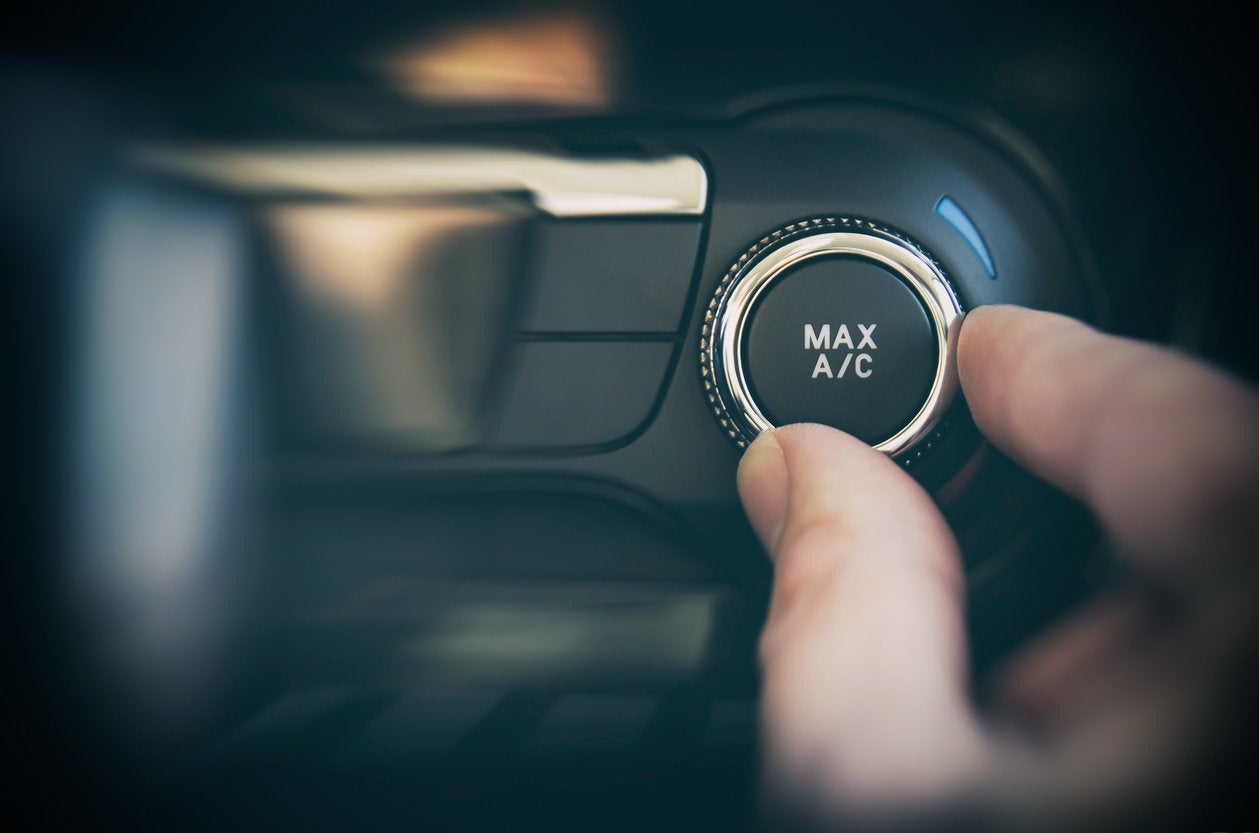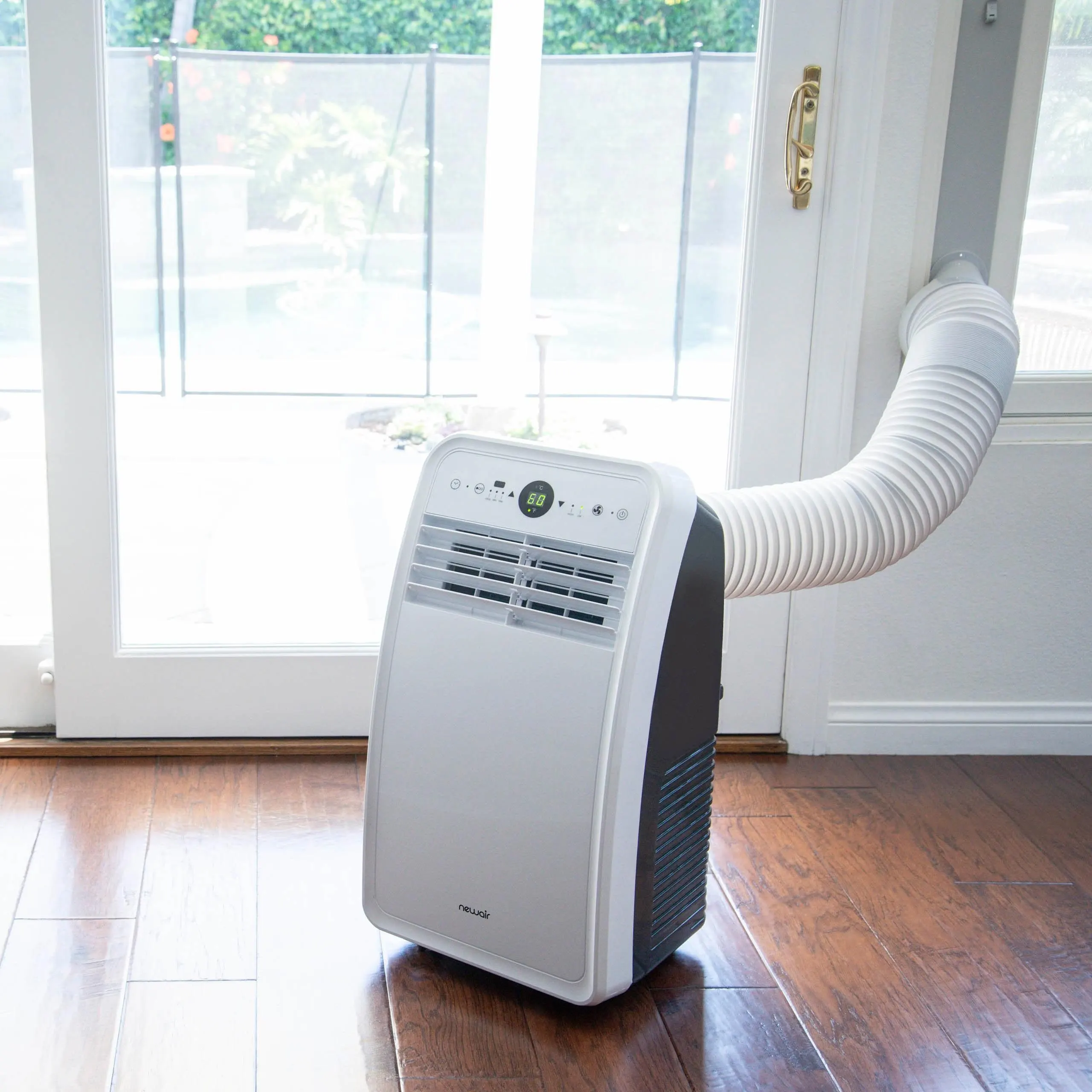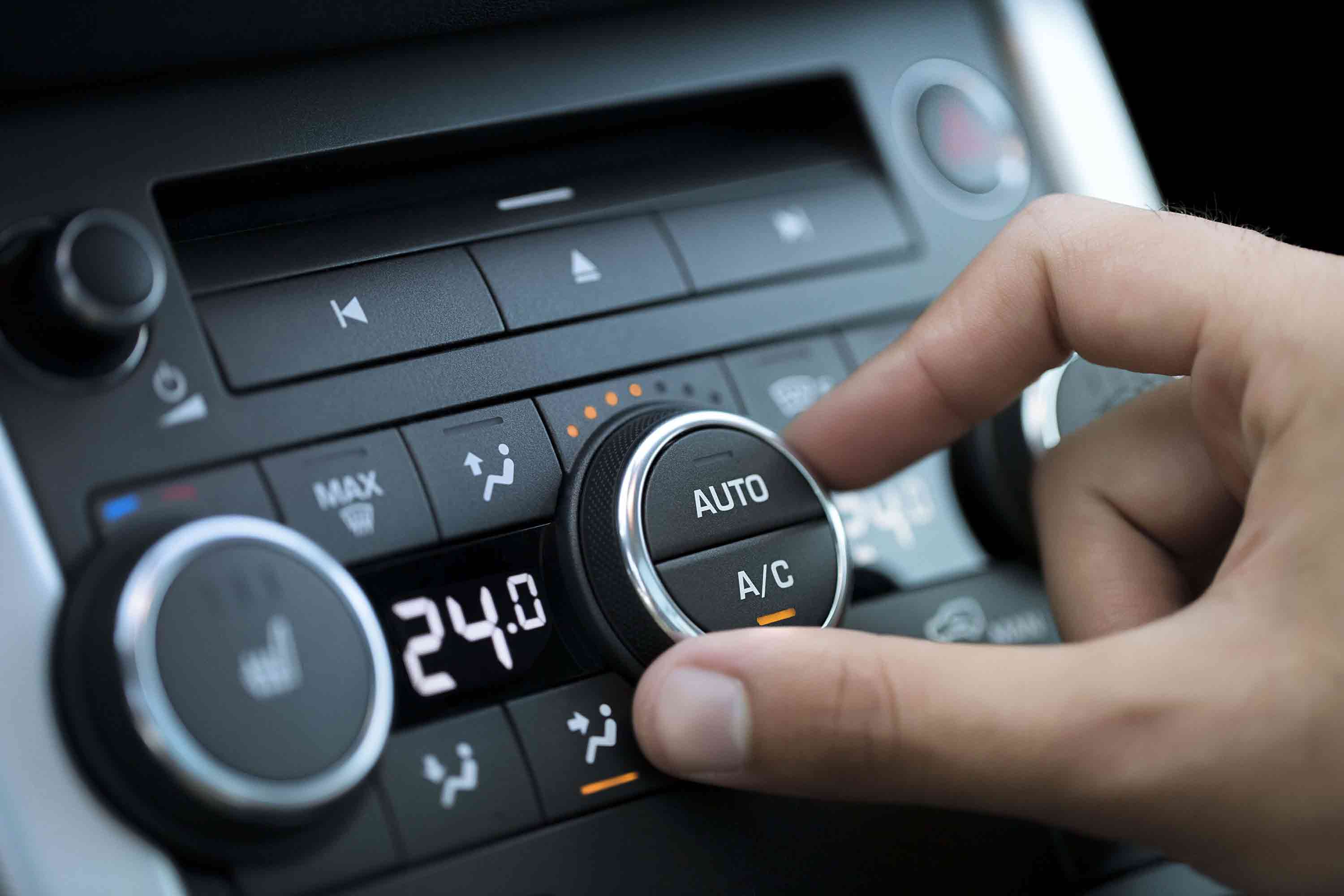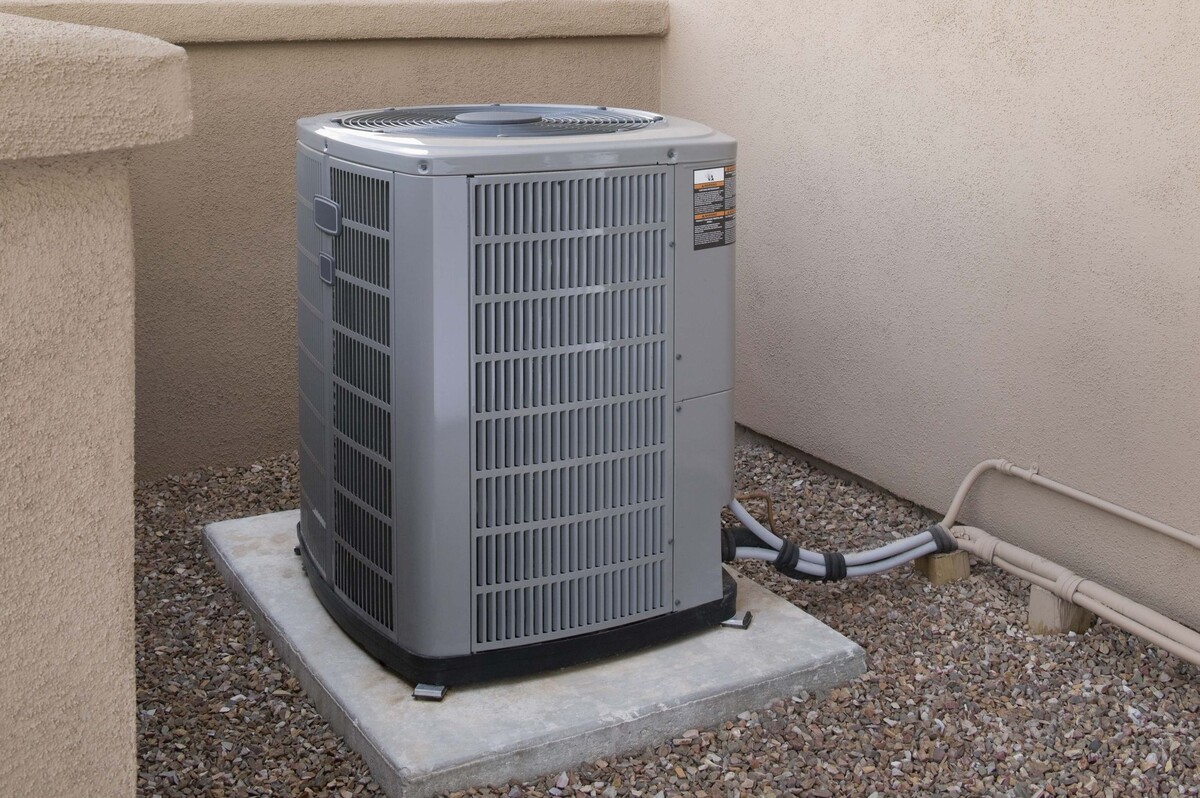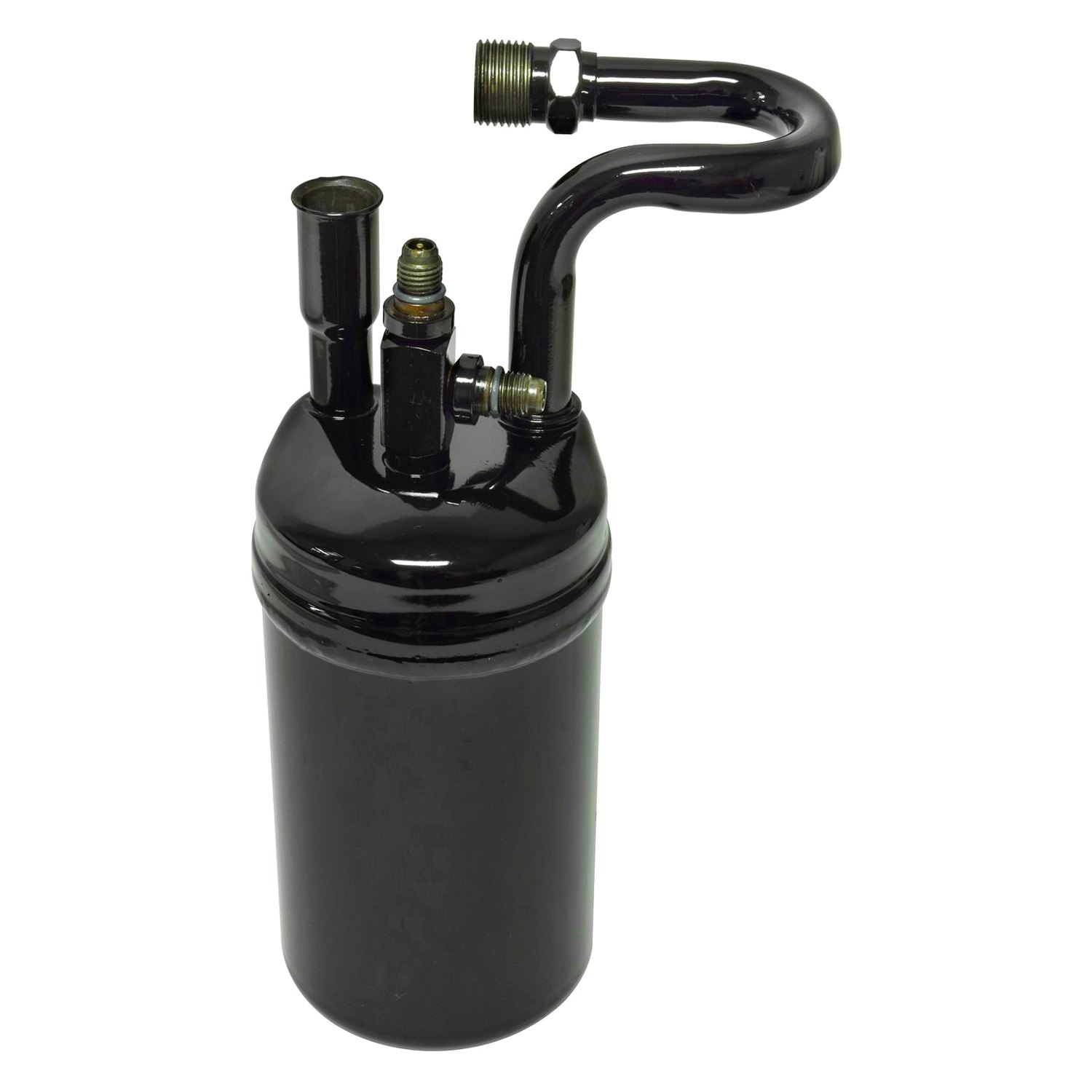Home>Home Maintenance>How Air Conditioning Systems Work
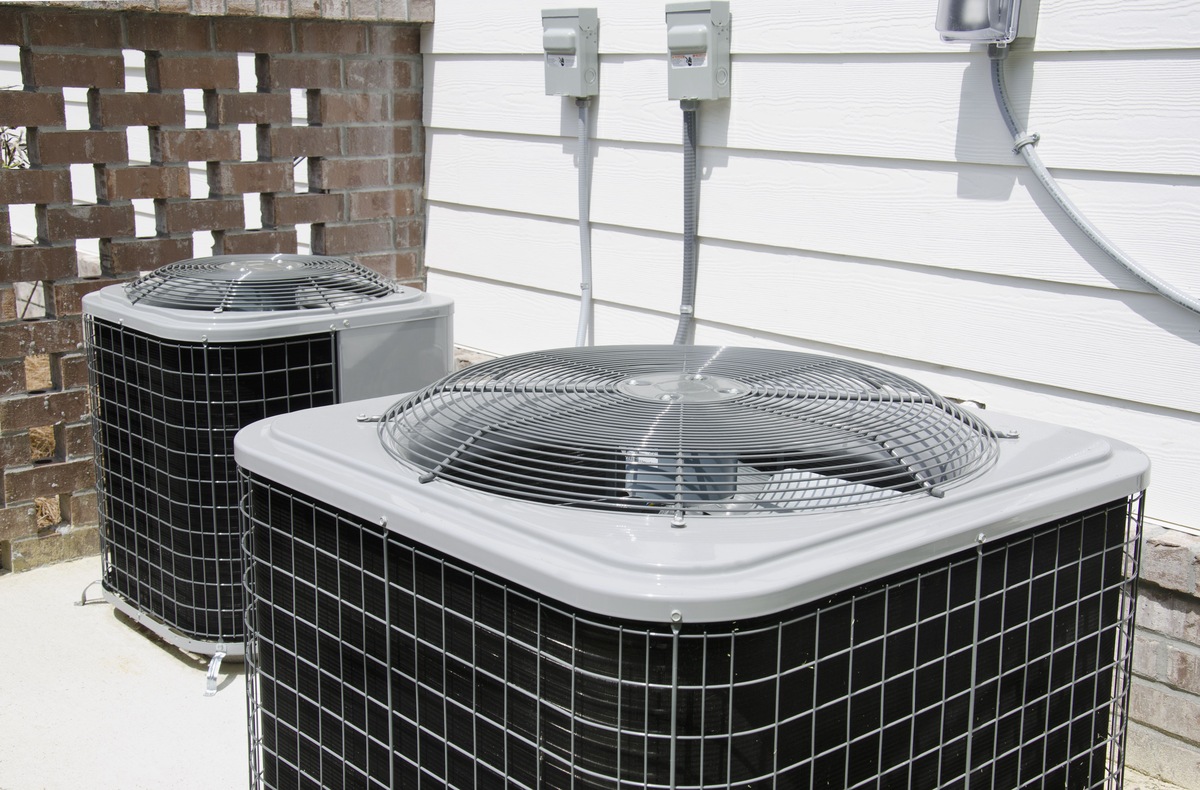

Home Maintenance
How Air Conditioning Systems Work
Modified: October 20, 2024
Learn how air conditioning systems work and the importance of regular home maintenance to ensure their efficiency and longevity. Discover tips and tricks to keep your AC running smoothly.
(Many of the links in this article redirect to a specific reviewed product. Your purchase of these products through affiliate links helps to generate commission for Storables.com, at no extra cost. Learn more)
Introduction
Welcome to the world of air conditioning systems! Whether it’s the scorching summer heat or the need for a comfortable indoor environment, air conditioning has become an essential part of our lives. From homes to offices, gyms to shopping malls, we rely on air conditioning to keep us cool and comfortable.
But have you ever wondered how air conditioning systems actually work? How do they cool the air and maintain a comfortable temperature? In this article, we will explore the basics of air conditioning systems and delve into the fascinating world of HVAC (Heating, Ventilation, and Air Conditioning) technology.
At its core, air conditioning is the process of treating the air to control its temperature, humidity, and overall quality. It involves a complex system of components and a refrigeration cycle that helps to cool and dehumidify the air.
Understanding the basics of air conditioning systems is crucial, as it enables you to make informed decisions about their installation, usage, and maintenance. By knowing how these systems work, you can troubleshoot minor issues, optimize energy efficiency, and prolong the lifespan of your air conditioning unit.
So, let’s dive in and explore the fascinating world of air conditioning and learn about the components, the refrigeration cycle, common issues, maintenance, and more!
Key Takeaways:
- Air conditioning systems work by removing heat and humidity from indoor air, creating a comfortable environment through a process involving components like compressors, evaporators, and condensers.
- Regular maintenance, proper airflow, and energy-efficient practices are essential for optimizing air conditioning systems, ensuring they operate smoothly, save energy, and contribute to a sustainable future.
Read more: How Vehicle Air Conditioning Works
Basics of Air Conditioning
Before we delve into the intricate workings of air conditioning systems, it’s essential to understand some fundamental concepts. Air conditioning is based on the principles of thermodynamics, which involve the transfer of heat from one place to another.
The main goal of an air conditioning system is to remove heat from an indoor space and expel it to the outside, thereby lowering the temperature and creating a comfortable environment. This is achieved through a combination of cooling and dehumidification.
Cooling is the process of removing heat from the air, while dehumidification involves reducing the moisture or humidity levels in the air. These two processes work hand in hand to create a pleasant and comfortable indoor atmosphere.
To cool the air, air conditioners use a refrigerant, a special fluid that is capable of absorbing heat energy from the surrounding air. The refrigerant undergoes phase changes, transitioning between a gas and a liquid state, to facilitate the transfer of heat.
Additionally, air conditioning systems also circulate and filter the air, removing pollutants, dust particles, and allergens to improve the air quality. This not only helps in creating a healthier indoor environment but also enhances the overall comfort.
It’s important to note that air conditioning is different from ventilation. While air conditioning deals with temperature and humidity control, ventilation focuses on the exchange of fresh air from the outdoors and the removal of stale air from the indoors. Both play crucial roles in maintaining a comfortable and healthy indoor environment.
Now that we have a basic understanding of how air conditioning works, let’s take a closer look at the components that make up an air conditioning system.
Components of an Air Conditioning System
Air conditioning systems are complex machines with several essential components working together to achieve the desired temperature and airflow. Understanding these components will give you a better insight into how the system operates. Let’s take a look at the key components:
- Compressor: The compressor is the heart of the system. It is responsible for circulating the refrigerant and increasing its pressure, which raises its temperature. The high-pressure, high-temperature refrigerant then moves to the next component.
- Condenser: The condenser is located outside the building and acts as a heat exchanger. It dissipates the heat absorbed from the indoor air by releasing it into the outdoor environment. As the refrigerant cools down, it transitions from a gas to a liquid state.
- Evaporator: The evaporator is located inside the building and is responsible for absorbing heat from the indoor air. As the liquid refrigerant enters the evaporator, it evaporates back into a gas, absorbing heat from the surrounding air in the process. This cools down the air, which is then circulated back into the room through the ductwork.
- Expansion Valve: The expansion valve regulates the flow of the refrigerant between the high-pressure side and the low-pressure side of the system. It controls the amount of refrigerant entering the evaporator, ensuring optimal cooling and dehumidification.
- Air Handler: The air handler is responsible for circulating the conditioned air throughout the building. It consists of a blower, a filter, and a set of dampers. The blower fan draws air from the room, passes it through the filter to remove pollutants, and then circulates the conditioned air back into the space through the ductwork.
- Ductwork: Ductwork is a network of channels that facilitates the movement of air throughout the building. It distributes the conditioned air from the air handler to different rooms or zones, ensuring consistent airflow and temperature control.
- Thermostat: The thermostat acts as the control center of the air conditioning system. It allows the users to set the desired temperature and control various functions of the system. It senses the current temperature and signals the system to cool or heat the space as needed.
These are the primary components that make up an air conditioning system. Each component plays a crucial role in the cooling and dehumidification process. Understanding how these components function together will help you in troubleshooting issues and ensuring the smooth operation of your air conditioning system.
Refrigeration Cycle
The refrigeration cycle is the heart of an air conditioning system. It is a continuous process that allows the system to absorb heat from the indoor air, release it outside, and then repeat the cycle to maintain a cool and comfortable environment.
The refrigeration cycle involves four main stages:
- Evaporation: The process begins as the refrigerant enters the evaporator coil in the indoor unit. The low-pressure refrigerant expands and evaporates, absorbing heat energy from the surrounding air. This causes the indoor air temperature to decrease, creating a cooling effect.
- Compression: The gaseous refrigerant then enters the compressor, where it is compressed to increase its pressure and temperature. As the refrigerant is compressed, its molecules become tightly packed together, which raises its energy and temperature.
- Condensation: The high-pressure, high-temperature refrigerant then flows into the condenser coil in the outdoor unit. Here, the refrigerant releases heat energy to the outside air, causing it to condense back into a liquid state. The expelled heat energy raises the outdoor air temperature, which is why the condenser unit is located outside the building.
- Expansion: The compressed liquid refrigerant then passes through the expansion valve, where its pressure is reduced. This causes the refrigerant to expand and cool down before entering the evaporator coil to begin the cycle again.
This continuous cycle of evaporation, compression, condensation, and expansion allows the air conditioning system to constantly cool and dehumidify the indoor air. The refrigerant acts as the working fluid that absorbs and releases heat, creating the desired temperature and humidity levels.
It’s important to note that the refrigeration cycle is driven by the compressor, which requires electricity to function. This is why air conditioning systems consume energy and contribute to your overall electricity consumption.
Understanding the refrigeration cycle is vital for troubleshooting common issues and maintaining the efficiency of your air conditioning system. By ensuring that each stage of the cycle is working properly, you can optimize cooling performance and extend the lifespan of your unit.
Understanding Airflow
Airflow plays a crucial role in the effectiveness and efficiency of an air conditioning system. Understanding how air moves within the system and throughout your living or working space can help you optimize the comfort and performance of your HVAC system.
There are two main types of airflow in an air conditioning system: supply airflow and return airflow.
Supply Airflow: Supply airflow refers to the conditioned air that is delivered or supplied into a room or space. This air is cooled and dehumidified by the air conditioning system before being sent through the ductwork and into different areas of the building. Proper supply airflow ensures that the desired temperature is reached and maintained in each room.
Return Airflow: Return airflow refers to the air that is pulled back into the air conditioning system for reconditioning. This air is drawn from the room or space back through the return ducts, passing through filters to remove particulates and allergens. The return airflow is then processed through the system’s evaporator coil, where heat is removed, and humidity is reduced before being recirculated as supply airflow.
Proper airflow is essential for maintaining a comfortable and healthy indoor environment. Here are a few factors to consider:
- Ductwork Layout: The layout and design of the ductwork affect airflow distribution. Properly sized and well-insulated ducts minimize air leakage and resistance, ensuring that conditioned air reaches each room efficiently.
- Vents and Registers: Make sure that vents and registers are open and unobstructed. Closing too many vents can restrict airflow, disrupting the balance of temperature and pressure within the system and negatively impacting efficiency.
- Filter Maintenance: Regularly cleaning or changing air filters is crucial for maintaining good airflow. Dirty filters restrict airflow, reduce system efficiency, and decrease indoor air quality. Follow the manufacturer’s guidelines for filter maintenance and replacement.
- Obstructions and Ventilation: Keep the area around supply and return vents clear of obstructions. Objects blocking the vents can disrupt airflow and reduce the system’s ability to deliver conditioned air.
Monitoring and optimizing airflow in your air conditioning system will enhance its performance, improve indoor air quality, and ensure a comfortable environment. If you have concerns about airflow or notice any issues, it’s recommended to consult a professional HVAC technician for guidance and assistance.
Regular maintenance of your air conditioning system, such as cleaning or replacing filters, can improve its efficiency and extend its lifespan.
Read more: How Evaporative Air Conditioning Works
Types of Air Conditioning Systems
Air conditioning systems come in various types, each designed to suit different spaces, cooling requirements, and budgets. Understanding the different types of air conditioning systems can help you choose the most appropriate option for your specific needs. Here are the most common types:
- Central Air Conditioning: Central air conditioning systems are the most popular choice for cooling larger spaces such as homes, offices, and commercial buildings. They consist of a centralized unit that cools the air in a central location, and then distributes it to different rooms through ductwork and vents. Central air conditioning provides efficient and consistent cooling throughout the entire building.
- Split Air Conditioning: Split air conditioning systems are a popular choice for individual rooms or smaller spaces. They consist of an indoor unit and an outdoor unit connected by refrigerant lines. The indoor unit delivers cool air into the room, while the outdoor unit houses the compressor and condenser. Split air conditioning systems are a flexible and cost-effective option for cooling specific areas.
- Window Air Conditioning: Window air conditioning units are self-contained systems that are installed in a window or a specially designed opening in a wall. These units consist of a single enclosure housing all the components, including the compressor, condenser, evaporator, and blower. Window air conditioners are typically used to cool individual rooms or small spaces and are relatively easy to install.
- Portable Air Conditioning: Portable air conditioning units are versatile and convenient options for cooling single rooms or specific areas. These units are freestanding and can be easily moved from one room to another. They typically require a window or vent for the exhaust hose to expel hot air. Portable air conditioners offer flexibility in terms of installation and are a temporary solution for cooling spaces.
- Ductless Mini-Split Air Conditioning: Ductless mini-split systems are similar to split air conditioning systems but do not require ductwork for air distribution. They consist of an outdoor unit connected to one or more indoor units installed in different zones or rooms. Ductless mini-split systems allow for individual temperature control in each zone, providing energy-efficient and customizable cooling options.
Choosing the right type of air conditioning system depends on various factors, such as the size of the space, the number of rooms to be cooled, energy efficiency requirements, and budget constraints. Consulting with a professional HVAC technician can help you assess your needs and make an informed decision.
Remember to consider factors such as noise levels, energy efficiency ratings, and maintenance requirements when selecting an air conditioning system. Proper installation, regular maintenance, and efficient operation will ensure that your air conditioning system functions optimally and provides reliable cooling for years to come.
How an Air Conditioning System Cools and Dehumidifies the Air
An air conditioning system works by utilizing the principles of heat transfer and the refrigeration cycle to cool and dehumidify the air in your living or working space. Understanding this process can help you appreciate how your system creates a comfortable environment. Let’s explore how an air conditioning system accomplishes this:
1. Absorbing Heat: The first step in cooling and dehumidifying the air is the absorption of heat. The indoor unit contains an evaporator coil filled with a cold refrigerant. As warm air from the room passes over the coil, the refrigerant absorbs the heat from the air, causing the refrigerant to change from a liquid to a gas state. This heat absorption lowers the temperature of the air, providing a cooling effect.
2. Removing Humidity: As the air is cooled, its moisture content condenses into water droplets. These droplets collect on the evaporator coil and are drained away through a condensate drain. Dehumidification is a natural byproduct of the cooling process in an air conditioning system.
3. Refrigeration Cycle: The warm refrigerant in the gas state then passes through the system’s compressor. The compressor pressurizes the gas, raising its temperature and energy level. The high-pressure, high-temperature refrigerant then flows into the outdoor unit, called the condenser.
4. Releasing Heat: In the condenser, the hot refrigerant is cooled by the outdoor air, typically through a fan and metal fins. The heat is expelled to the outside, and the refrigerant condenses back into a liquid state. As the refrigerant loses heat, it returns to the indoor unit to repeat the cooling process.
5. Air Circulation: While the air is being cooled and dehumidified, the air conditioning system also circulates and filters the air. The blower fan in the indoor unit draws the conditioned air back into the system, passes it through filters to remove dust, allergens, and other particles, and then redistributes the purified air into the room through the ductwork.
This continuous cycle of cooling, dehumidification, and air circulation maintains a comfortable indoor temperature and reduces humidity levels.
It’s important to note that each air conditioning system has specific capabilities and settings that can further enhance comfort and energy efficiency. These features may include programmable thermostats, variable-speed fans, and zoning options to provide customized comfort control in different areas of your space.
By properly maintaining and operating your air conditioning system, you can optimize its cooling and dehumidification capabilities, ensuring a comfortable and healthy indoor environment for you and your loved ones.
Common Issues and Maintenance of Air Conditioning Systems
Like any complex mechanical system, air conditioning systems can experience issues and require maintenance to ensure optimal performance. Regular maintenance and prompt attention to common issues can help prolong the lifespan of your system and prevent costly repairs. Here are some common issues and maintenance tips for air conditioning systems:
1. Insufficient Cooling: If your air conditioning system is not providing adequate cooling, several factors could be at play. Check to ensure that the thermostat is set correctly and that the air filters are clean. Dirty filters can restrict airflow and reduce cooling efficiency. Additionally, inspect the outdoor unit for any debris or obstructions that may be limiting airflow to the condenser coil.
2. Poor Airflow: Insufficient airflow can result from clogged or blocked air filters, obstructed vents, or issues with the blower fan. Clean or replace dirty air filters regularly, and ensure that vents and registers are not obstructed by furniture or other objects. If the issue persists, it may require professional assistance to diagnose and resolve the problem.
3. Refrigerant Leaks: A refrigerant leak can cause a significant decline in cooling performance. Signs of a refrigerant leak include reduced cooling effectiveness, ice buildup on the evaporator coil, and hissing sounds near the indoor or outdoor unit. If you suspect a refrigerant leak, it is important to contact a professional HVAC technician to locate and repair the leak and recharge the system with the correct amount of refrigerant.
4. Strange Noises: Unusual noises coming from your air conditioning system may indicate various issues, such as a worn-out fan belt, loose components, or a failing motor. Squealing, grinding, or rattling noises should not be ignored and should be addressed promptly by a qualified technician to prevent further damage and potential system failure.
5. Lack of Maintenance: Regular maintenance is crucial in keeping your air conditioning system running smoothly. Schedule annual professional inspections and tune-ups to ensure that all components are clean, lubricated, and functioning properly. This includes cleaning the evaporator coil, condenser coil, and condensate drain, checking refrigerant levels, inspecting electrical connections, and verifying system operation.
6. Thermostat Issues: If your air conditioning system does not respond to changes in temperature settings or does not cycle on and off as expected, the issue may lie with the thermostat. Ensure that the thermostat is set to the desired temperature and that the location of the thermostat is not affected by direct sunlight, drafty areas, or heat-emitting appliances. If you suspect a faulty thermostat, consult a professional technician to repair or replace it.
7. High Energy Consumption: Energy efficiency is essential for reducing operating costs and minimizing environmental impact. To enhance energy efficiency, keep the system clean, maintain adequate airflow, and consider upgrading to a programmable thermostat or a more energy-efficient model if your current system is outdated.
Remember, while some maintenance tasks can be performed by homeowners, it is crucial to consult a professional HVAC technician for comprehensive inspections and complex repairs. Regular maintenance and timely resolutions of issues will help your air conditioning system perform optimally and keep you comfortable throughout the seasons.
Energy Efficiency and Environmental Considerations
As concerns about the environment and energy consumption continue to grow, it is essential to consider the energy efficiency of your air conditioning system. An energy-efficient system not only reduces your carbon footprint but also helps save money on energy bills. Here are some tips to improve the energy efficiency of your air conditioning system:
1. Seasonal Energy Efficiency Ratio (SEER): The SEER rating is a measure of an air conditioning system’s energy efficiency. Higher SEER ratings indicate greater efficiency. When purchasing a new system, look for units with higher SEER ratings to minimize energy consumption and maximize cost savings over time.
2. Regular Maintenance: Regular maintenance is crucial for optimizing energy efficiency. Clean or replace air filters regularly to ensure proper airflow and minimize strain on the system. Schedule professional tune-ups to clean coils, check refrigerant levels, and inspect electrical connections. Well-maintained systems operate more efficiently and last longer.
3. Programmable Thermostats: Investing in a programmable thermostat allows you to set temperature schedules based on your daily routine. This can help reduce energy consumption by automatically adjusting temperature settings when you’re away from home or sleeping. Smart thermostats offer even greater control with remote access and learning capabilities.
4. Zoning Systems: Zoning systems divide your home or building into separate zones, allowing for individual temperature control in each area. This eliminates the need to cool unoccupied spaces, saving energy. By directing airflow where it is needed most, zoning systems enhance comfort while reducing energy waste.
5. Proper Insulation: Ensure that your home or building is well-insulated to prevent cool air from escaping and warm air from entering. Insulate walls, ceilings, and windows to reduce the workload on your air conditioning system. Proper insulation helps maintain a stable indoor temperature and improves energy efficiency.
6. Use Natural Ventilation: Take advantage of cooler outside temperatures during mild weather by opening windows and utilizing natural ventilation. This reduces the reliance on your air conditioning system and provides a refreshing airflow. Ceiling fans and cross ventilation can also help circulate air and create a more comfortable environment.
7. Consider Renewable Energy: Explore the possibility of using renewable energy sources, such as solar power, to offset your air conditioning system’s energy consumption. Solar panels can generate clean energy, reducing reliance on traditional electricity sources and lowering overall environmental impact.
8. Dispose of Old Units Properly: When replacing an old air conditioning system, ensure that the unit is disposed of properly. Follow local regulations and consider recycling options to minimize environmental harm.
By implementing these energy efficiency practices, you can reduce your environmental impact, lower energy bills, and enjoy a comfortable indoor environment. Remember, small changes and conscious decisions can collectively make a significant difference in preserving our planet for future generations.
Read more: How To Flush Air Conditioning System
Conclusion
Air conditioning systems have revolutionized the way we experience comfort, allowing us to escape the sweltering heat and create a pleasant indoor environment. Understanding the basics of how these systems work, the components involved, and the maintenance required, allows us to maximize their efficiency and lifespan.
We explored the essential components of an air conditioning system, including the compressor, condenser, evaporator, expansion valve, air handler, ductwork, and thermostat. Each of these components plays a vital role in the cooling and dehumidification process. By understanding their functions, we can better troubleshoot issues and ensure smooth system operation.
The refrigeration cycle lies at the heart of the air conditioning process, enabling the system to absorb heat from indoor air, release it outside, and repeat the cycle to maintain a comfortable temperature. Proper airflow is essential for even distribution of conditioned air throughout the space and optimizing the system’s cooling performance.
We explored different types of air conditioning systems, from central air conditioning to split systems, window units, portable units, and ductless mini-splits. Each type offers its own advantages and is suitable for different applications and spaces.
Common issues that may arise with air conditioning systems were discussed, such as insufficient cooling, poor airflow, refrigerant leaks, and thermostat problems. Regular maintenance, including cleaning or replacing air filters, professional tune-ups, and prompt attention to issues, helps ensure smooth system operation and energy efficiency.
We also delved into the importance of energy efficiency and environmental considerations. By choosing energy-efficient systems, practicing regular maintenance, utilizing programmable thermostats, and considering renewable energy options, we can reduce energy consumption, lower environmental impact, and save on energy bills.
In conclusion, air conditioning systems provide comfort and control over the indoor environment, making our lives more enjoyable and productive. By understanding their workings, practicing regular maintenance, and embracing energy-efficient practices, we can optimize their performance, prolong their lifespan, and contribute to a more sustainable future.
So, stay cool, breathe easy, and enjoy the comfort that air conditioning systems bring to your everyday life!
Frequently Asked Questions about How Air Conditioning Systems Work
Was this page helpful?
At Storables.com, we guarantee accurate and reliable information. Our content, validated by Expert Board Contributors, is crafted following stringent Editorial Policies. We're committed to providing you with well-researched, expert-backed insights for all your informational needs.
